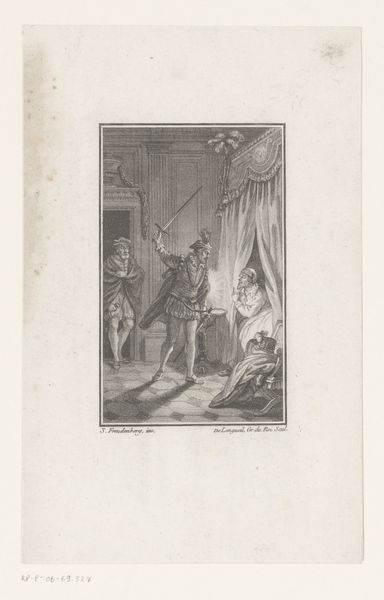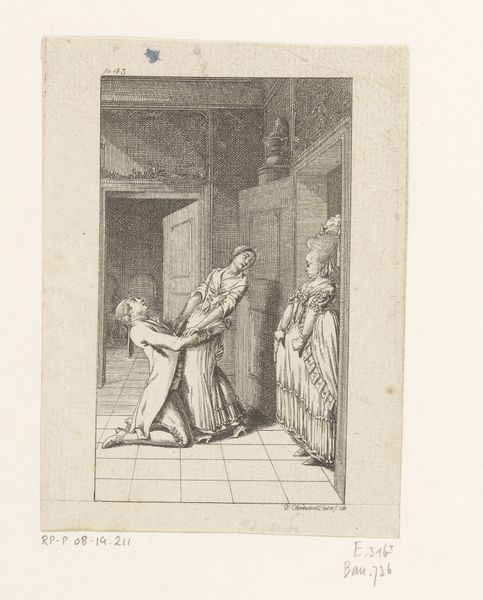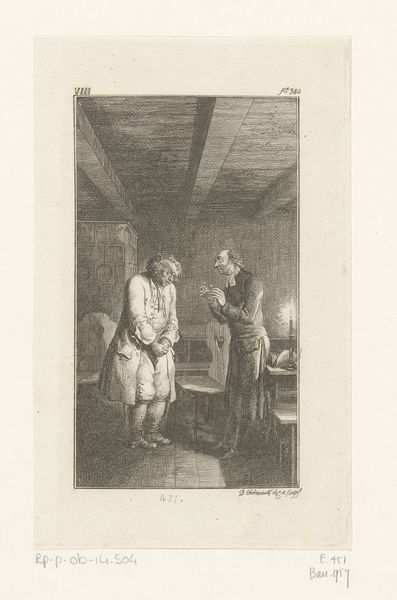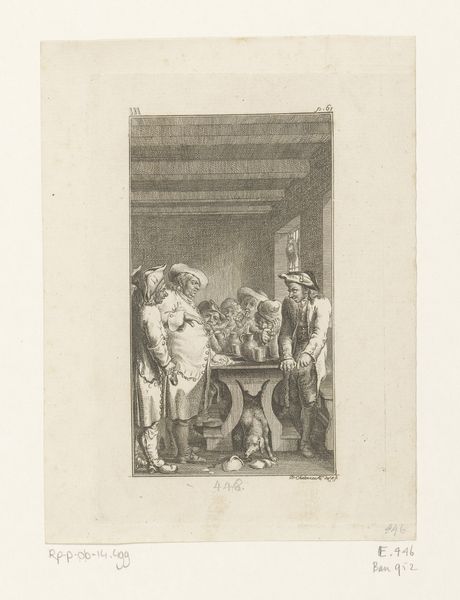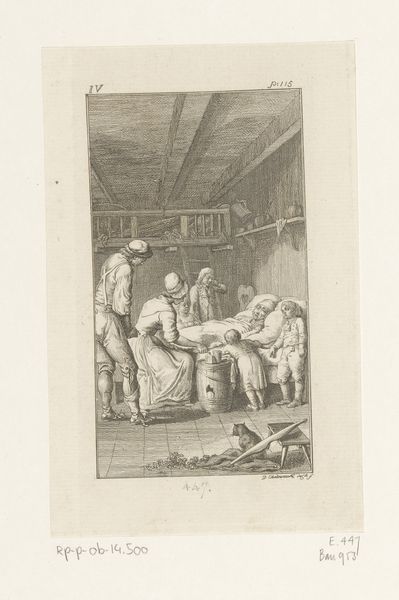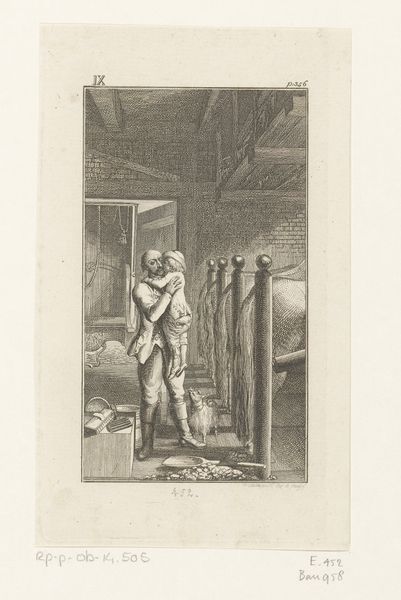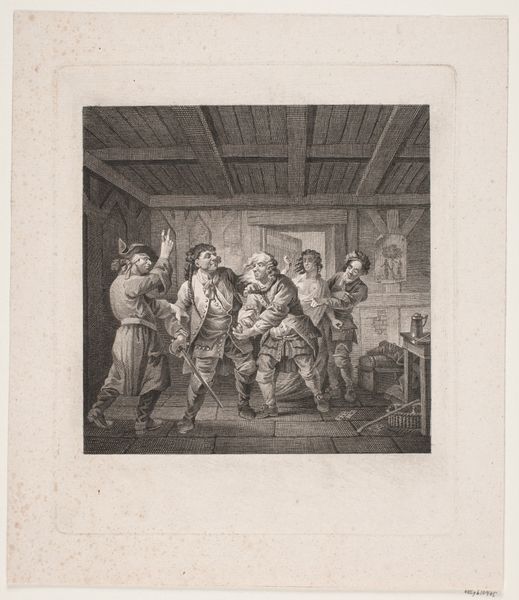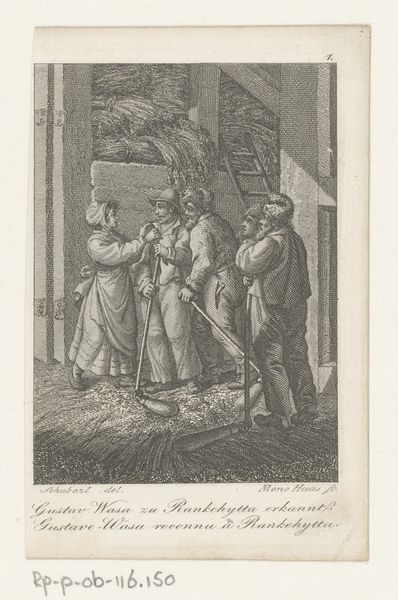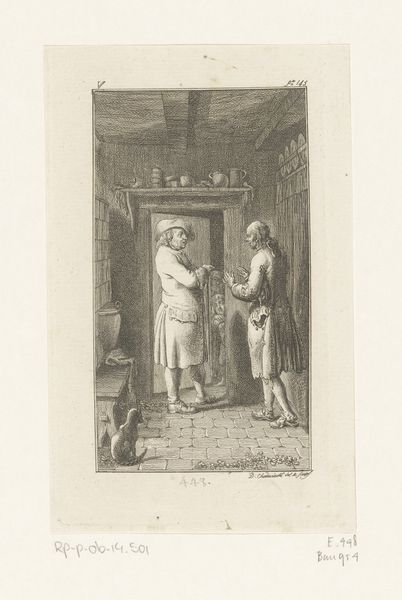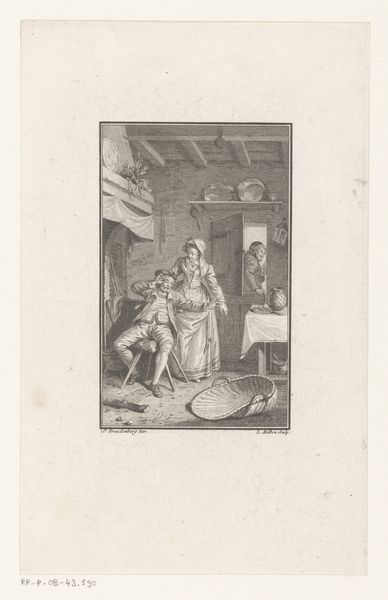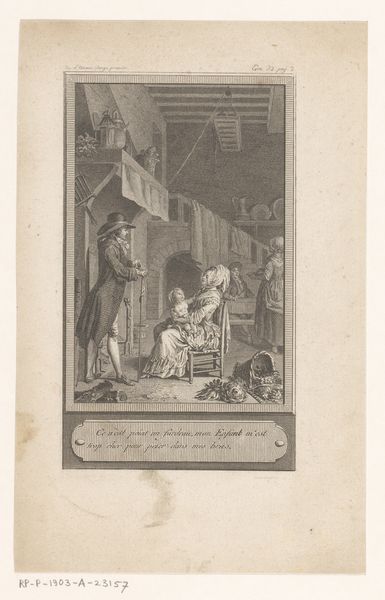
Dimensions: height 159 mm, width 88 mm
Copyright: Rijks Museum: Open Domain
Curator: What strikes me first is the overwhelming sense of dread emanating from this domestic scene, all rendered in such precise detail. The tension feels palpable. Editor: Indeed. What you’re reacting to is Daniel Nikolaus Chodowiecki’s 1776 engraving, "Charles Primrose met de portemonnee van Burchell". The scene depicts a moment from Oliver Goldsmith's novel *The Vicar of Wakefield*, a very popular novel at the time. Curator: *The Vicar of Wakefield*. It’s the narrative that makes the symbols really sing. Just look at Burchell, his hand outstretched, offering restitution or perhaps exposing a wrong. Is that the stolen purse in his hand? Editor: Exactly! The engraving captures the climactic moment when Burchell, accused of robbing the Primrose family, reveals the real thief. This work exemplifies the fusion of history painting with the intimacy of genre painting, speaking volumes about social anxieties around morality and appearances during that era. Curator: Note the almost theatrical composition—characters frozen in their emotional reactions. The window, positioned far back and to the left, is reminiscent of early portraiture and even some of the spatial understanding apparent in manuscript illumination. The light barely seems to touch anything in the room. Is that symbolic of an enlightenment ideal, hidden behind class division? Editor: It's compelling to view the muted lighting as emblematic of social constraints. Consider how the print medium allowed for broad distribution, enabling the story's moral lessons to circulate widely. The engraving played a role in shaping public opinion. Prints like this provided commentary on social conditions and class differences—reaching beyond aristocratic circles. Curator: The power of printed images is fascinating. Think about the countless viewers whose interpretations, across generations, contribute to its ongoing cultural significance! Editor: Agreed. Today, pondering the artistic choices, from Chodowiecki's technical skill in capturing emotional nuance to the print's accessibility, reveals a work deeply interwoven with its cultural moment. Curator: Thank you for illuminating this further, providing new interpretations for an old vision. I find myself rethinking some things… Editor: Always happy to recontextualize. This artwork exemplifies how art embodies social dialogue.
Comments
No comments
Be the first to comment and join the conversation on the ultimate creative platform.
